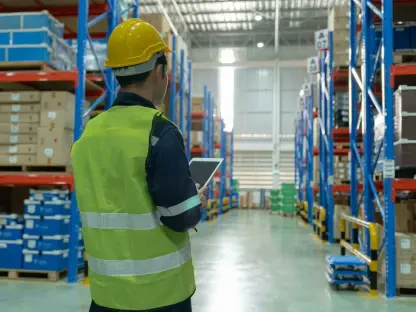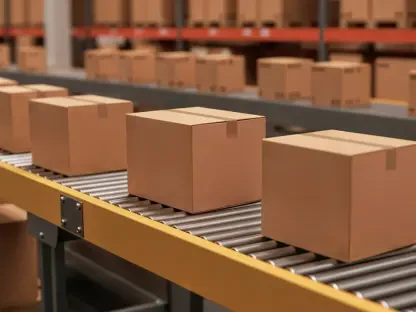In the rapidly evolving world of logistics, where automation and AI are revolutionizing supply chains, few understand the critical role of infrastructure better than Rohit Laila. With decades of experience spanning supply chain management and delivery, Rohit has witnessed firsthand the transformative power of technology and innovation in the sector. His expertise lies in integrating cutting-edge solutions with robust infrastructure to drive efficiency and scalability. In this interview, we dive into the often-overlooked foundations of modern logistics, exploring how physical networks, edge computing, and strategic partnerships are shaping the future of the industry, as well as the challenges of global expansion and the importance of future-proofing operations.
Can you share why infrastructure is so vital to the success of modern logistics operations?
Absolutely. Infrastructure is the backbone of logistics today. With supply chains growing more complex and customer expectations for speed and accuracy skyrocketing, you can’t afford any weak links. It’s not just about moving goods—it’s about ensuring every piece of the puzzle, from data systems to physical networks, works seamlessly. Automation, AI, and robotics are game-changers, but they’re only as good as the infrastructure supporting them. Without scalable, reliable IT frameworks and low-latency networks, even the best tech can falter, leading to delays or errors that ripple through the entire operation.
What are the risks for companies that don’t prioritize a strong infrastructure to support technologies like AI and automation?
The risks are massive. If your infrastructure isn’t up to par, you’re looking at inefficiencies at best and complete breakdowns at worst. Legacy systems that can’t integrate with new tech create bottlenecks—think delayed orders or inventory mismatches. Without a solid foundation, AI and automation can’t deliver on their promise of speed and precision. It’s like building a skyscraper on sand; no matter how advanced your tools are, the whole thing can collapse under pressure. Companies end up with frustrated customers, lost revenue, and a damaged reputation.
How do logistics companies manage the intense demands of automation and real-time operations in their networks?
It’s a huge challenge. Automated fulfillment centers handle enormous transaction volumes, and the networks have to keep pace in real time. You can’t just throw more cloud capacity at the problem—it doesn’t address the need for speed and reliability. Low-latency networks are key here. They ensure data moves fast enough to prevent bottlenecks, whether it’s syncing inventory or guiding robotic systems. Without that, you’re risking delays or errors that can grind operations to a halt, especially in high-pressure environments like peak seasons.
Why is the physical layer, such as cabling, so crucial in logistics settings like warehouses?
People often overlook cabling, but it’s foundational in logistics environments. Warehouses are tough places for connectivity—think sprawling spaces, metal racks, and tons of devices all competing for bandwidth. Poor cabling can slow down data transfer, cause retransmissions, and even disrupt power or thermal needs for AI systems. It’s not just a minor annoyance; it’s a strategic risk. High-performance cabling ensures everything from IoT sensors to robotic pickers operates without a hitch, keeping the whole operation running smoothly.
How does edge computing contribute to the transformation of logistics operations?
Edge computing is a game-changer for logistics. By processing data closer to where it’s generated—like in a warehouse or distribution center—you slash latency and save on bandwidth. This is critical for time-sensitive tasks like robotic picking or autonomous vehicle navigation. It also boosts compliance by keeping sensitive data local, within specific boundaries. Plus, edge sites can act as mini “AI factories,” running real-time analytics for things like predictive maintenance. If a sensor spots a potential equipment failure, you can act before it escalates, minimizing downtime.
What are some of the biggest hurdles logistics companies face when scaling their operations globally?
Scaling globally is incredibly complex. You’re trying to maintain consistent standards for automation and connectivity across different countries, but local regulations, site conditions, and supply chain quirks throw curveballs. What works in one region might not in another due to compliance rules or infrastructure limitations. It’s a logistical nightmare to ensure every site operates at the same level of efficiency. Without careful planning, you risk inconsistent performance, which can undermine the entire global network.
How do strategic partnerships help overcome the challenges of global expansion in logistics?
Partnerships are a lifeline when scaling globally. Working with experienced vendors or systems integrators helps bridge gaps in skills and resources. They can navigate local challenges—whether it’s sourcing materials, meeting regulations, or staffing up quickly. They also ensure consistency in deployment, which is critical for maintaining performance across regions. In an industry facing labor shortages and infrastructure pressures, these collaborations allow companies to expand faster and more reliably than they could alone.
What steps can logistics companies take to future-proof their operations in this fast-evolving industry?
Future-proofing starts with investing in the right infrastructure—think high-performance cabling, scalable networks, and edge computing capabilities. These are non-negotiable if you want to stay competitive with AI and automation. But tech alone isn’t enough; you need a holistic approach. Strong partnerships can extend your capabilities and help you scale efficiently. It’s about building resilience and flexibility into every layer of your operation, so you’re ready for whatever comes next, whether it’s a surge in demand or a new technological shift.
What is your forecast for the future of infrastructure in logistics over the next decade?
I believe infrastructure will become even more central to logistics in the next ten years. As automation and AI continue to advance, the demand for ultra-reliable, low-latency networks will only grow. Edge computing will likely become standard, with more companies processing data on-site for faster decision-making. We’ll also see a push for sustainable infrastructure—think energy-efficient systems and greener materials. But the real differentiator will be adaptability. Companies that build flexible, scalable foundations now will be the ones leading the pack, ready to pivot as new technologies and market needs emerge.









